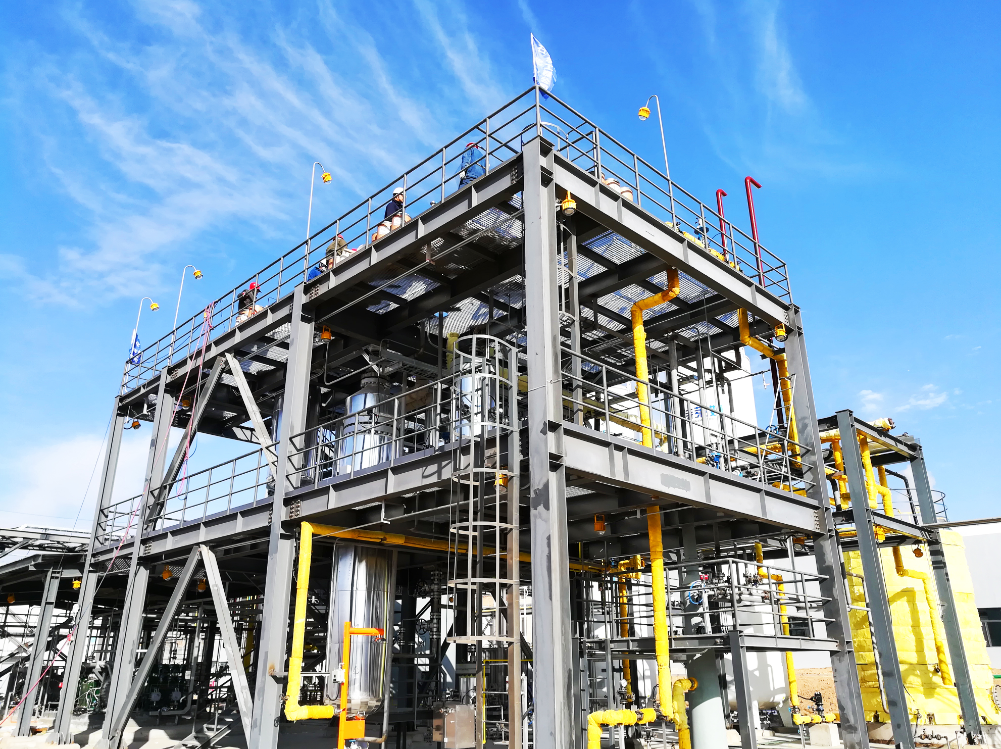
The world's first demonstration project for direct solar fuel synthesis started operation in Lanzhou, China on Jan. 17, 2020. The project represents that China now takes the first step in the world for industrial production of liquid fuels from solar energy.
Overall, the project converts carbon dioxide, water and solar energy into transportable liquid fuels such as methanol by taking advantages of three technological units: solar photovoltaics to generate electricity; electrolyzer to split water producing hydrogen; and CO2 hydrogenation to produce methanol in the end.
The project is based on the advanced technologies of electrocatalytic water splitting and CO2 hydrogenation developed by Prof. LI Can’s team in the Dalian Institute of Chemical Physics (DICP) of the Chinese Academy of Sciences.
Prof. LI’s team developed new type of electrocatyalysts for electrocatalytic water splitting, which reduces the energy consumption to 4.0-4.2 Kwh/Nm3-H2 for large scale hydrogen production at a rate of 1000 Nm3-H2/h, which is the highest energy conversion efficiency reported so far for the large-scale alkaline water electrolysis.
Prof. LI’s team also developed an efficient ZnO-ZrO2 solid solution bimetallic oxide catalyst for CO2 hydrogenation to methanol. This catalyst can achieve excellent performance in CO2 hydrogenation to methanol. The methanol selectivity is over 90% for a single pass in the fixed-bed reaction process, and the performance loss was less than 3% after 3,000 hours of operation under industrial conditions.
The methanol produced by such type of PV-E-C (photovoltaic-electrolyzer-catalysis) process is a true kind of “green methanol.” Unlike the methanol production from coal or natural gas which emits CO2, the green methanol as a liquid fuel result in zero carbon emission taking account of carbon footprint.
The methanol produced in the PV-E-C process has more than 10% solar energy conversion efficiency, which is far superior to ca. 1% of solar energy conversion efficiency by natural photosynthesis of the majority plants. Because the green methanol is produced using CO2 and H2O as the initial feed stocks and solar energy as the power source, this PV-E-C process hence can be considered as a truly approach for “artificial photosynthesis of solar fuels” in large scale.
The green solar methanol production demonstrated in Lanzhou is a revolutionary step toward that combining carbon capture, storage and utilization (CCSU) to produce transportable liquid fuels. It may serve as a model and practical process in energy transition from fossil fuels to renewable energy, since such technology is applicable to any renewable energy.

Equipment for CO2 hydrogenation to produce methanol (Image by DICP)

86-10-68597521 (day)
86-10-68597289 (night)

52 Sanlihe Rd., Xicheng District,
Beijing, China (100864)

